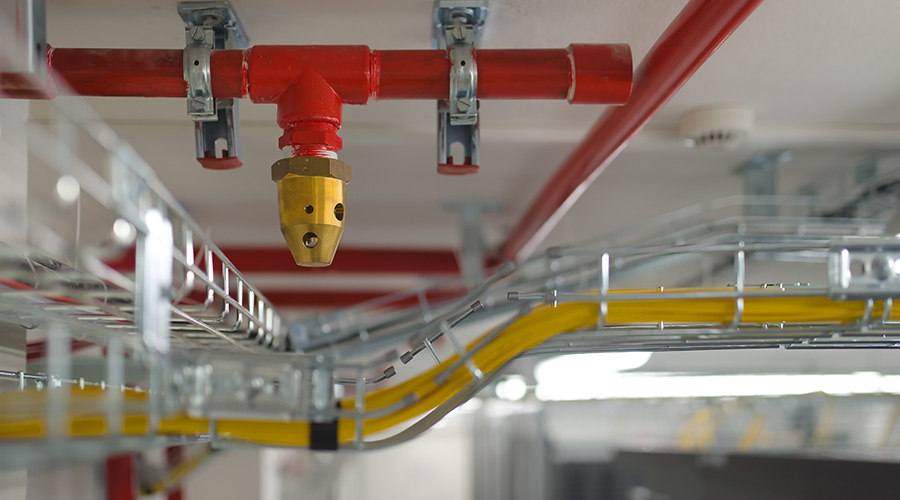Thoughtful Approach Required For Buildings To Be Both Fire Safe And Sustainable
To balance some sustainable design strategies like open office plans, energy efficient lighting, or solar panels, additional steps may be required to ensure fire safety.
Designing and operating buildings that advance both fire safety and sustainability requires a thoughtful approach. “A sound fire protection strategy must be developed concurrently with a building design that optimizes sustainability,” says Ray Grill, principal with design and engineering firm, Arup.
To balance these goals, facility managers need to understand and work toward the big picture: the purpose of the facility, how it operates day-to-day, and how best to manage any conflicts between goals that arise. “It becomes similar to any optimization problem,” Dembsey says. For instance, lighter materials can help increase gas mileage in cars and trucks, but may offer less protection in a crash. With buildings, as with vehicles, it’s necessary to avoid focusing on one constraint or goal to the exclusion of others, he notes.
Open floor plans are one example. Compared to traditional office designs, they can reduce the square footage required by employees and the amount of construction materials consumed, lowering the environmental impact.

(Open plan offices can reduce the amount of space and materials needed to house employees — reducing the environmental impact — but may also have fewer smoke barriers.)
The designs also can mean fewer smoke barriers. A smoke control system may be needed to provide occupants enough time to get out of the building in the event of a fire, before the smoke moves so low the space no longer is tenable, says Wayne Moore, vice president with engineering and consulting firm, Jensen Hughes.
Similarly, skylights can reduce the amount of artificial light needed to illuminate a space, again cutting energy use. However, if the lightwells traverse multiple floors, they can provide a path for smoke and fire to travel, Moore notes. Additional sprinklers may be needed to provide adequate fire safety.
The design of energy efficient lighting systems that cycle off when no one is in an area for an extended period of time also can benefit from input from a fire safety expert. Even in these areas, it’s critical to maintain minimum illumination levels along egress routes to ensure anyone who uses them can exit in an emergency safely and quickly. “With the expanded use of energy-saving lighting systems and designs, it’s important that any such sensors, switches, timers or related controls do not lower or otherwise compromise the minimum lighting levels required by codes,” to allow safe egress when the building is occupied, Solomon says.
Not surprisingly, the proper design and installation of energy-saving or sustainable equipment also is critical. That’s the case when solar panels are installed on building rooftops. Moore says some questions still surround solar panel safety. One centers on the finding that the panels, when on fire, will radiate heat and lead to whole roof fires, Moore says. “Now it’s a whole different fire, and one that you may not be able to control,” he says. To mitigate this risk, facility managers should evaluate the entire roof-panel assembly, and assess how it might perform in the event of a roof fire, he adds.
Solar panels also can create a hazard for fire fighters, who may need to get onto the roof to, for instance, open it to provide vertical ventilation. Before they do, the power connection to the photovoltaic panels must be turned off. However, even that may not be enough, as any panel that receives light still may generate electricity, endangering fire fighters, Solomon says. A potential solution is throwing a tarp over the panels. In addition, the design should keep the panels away from the edge of the roof line and maintain walkways between panels, so fire fighters can safely step onto and walk around the roof, he adds.
Also key to approaching fire safety and sustainability in an integrated fashion is the facility manager’s willingness to seek input from qualified, capable experts, Dembsey says. “A building manager needs good people to help him or her make decisions and be fully informed.” To be sure, the facility manager needs to articulate the overall objectives, and then draw on the expertise of employees and other experts to determine how best to work toward them. If a facility manager doesn’t articulate and help everyone move toward the overall goals, each expert may focus on his or her own specialty, without considering how each action impacts other areas.
Related Topics:















